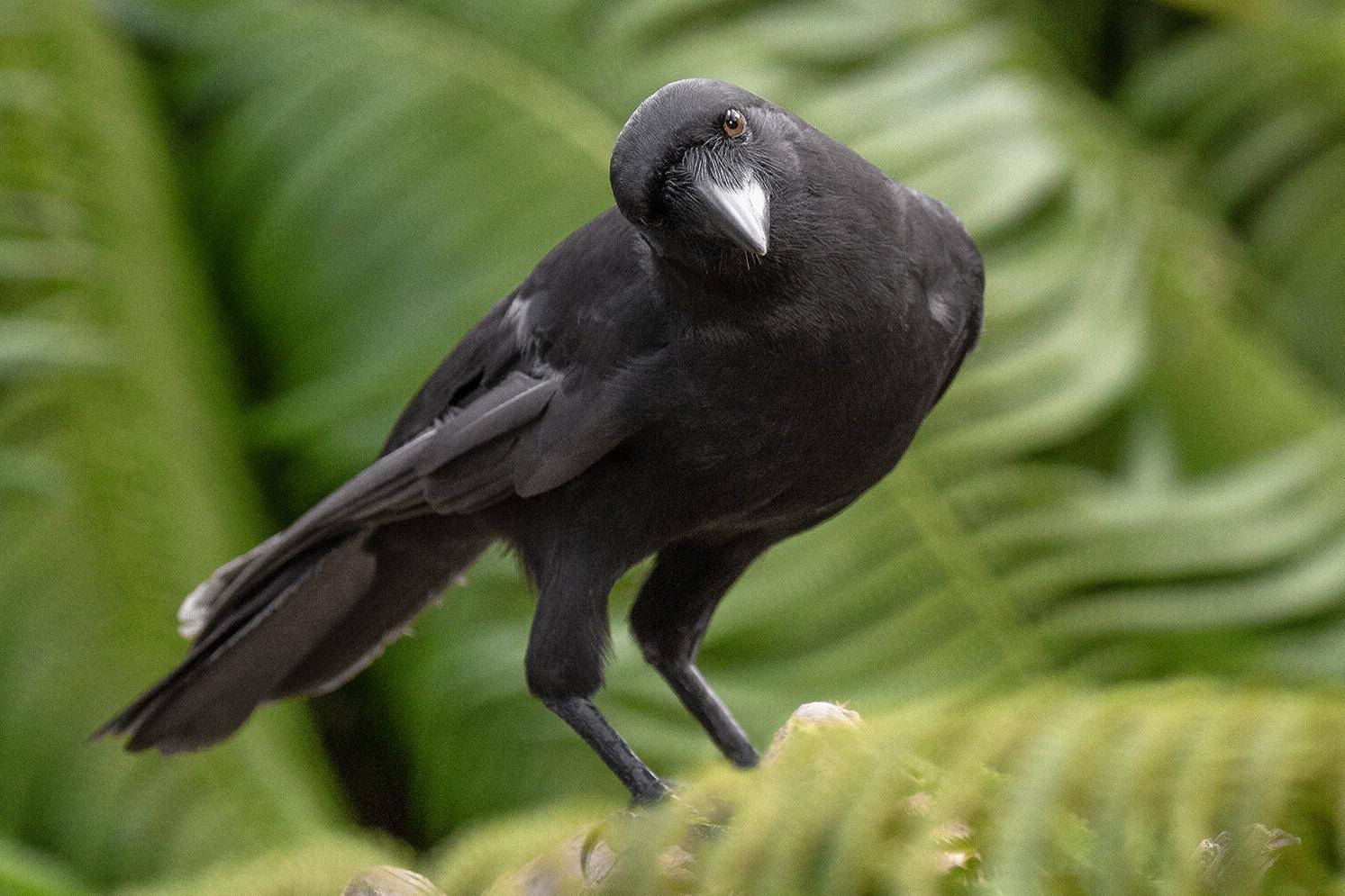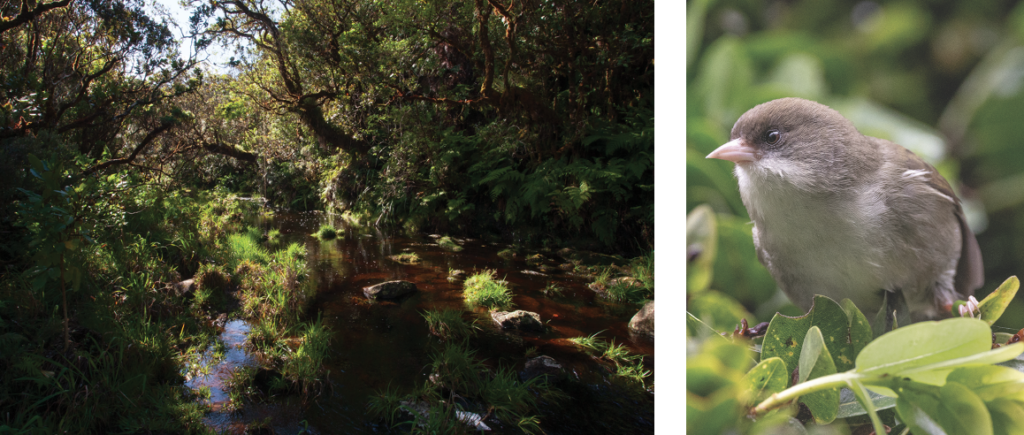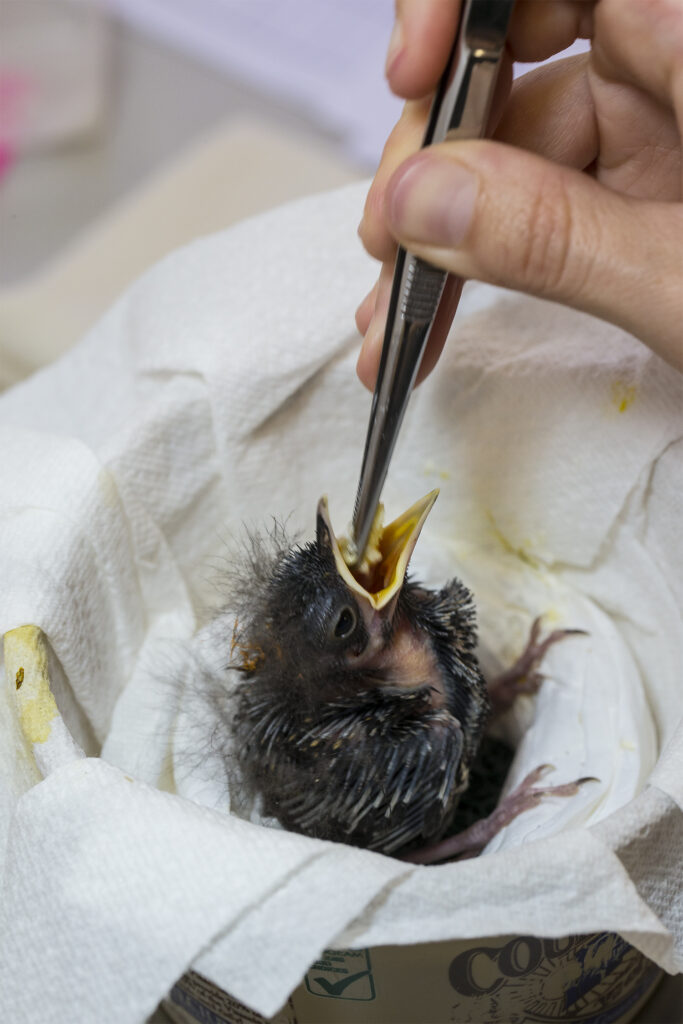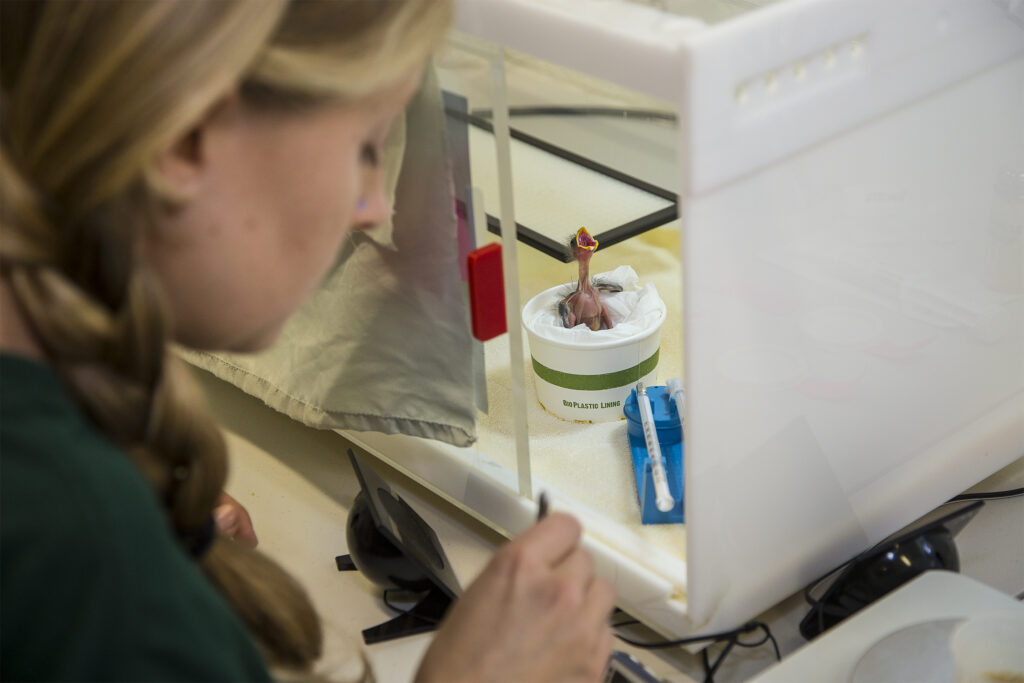
Taking Innovative Action to Save Hawaiian Forest Birds
A few hundred years ago, the sound of the Hawaiian rainforest was filled with the vibrant and diverse songs of Hawai‘i’s unique avifauna. Over time, the forest has become increasingly quiet as Hawaiian forest birds continue to experience sharp population declines due to human impact. One of the biggest threats to native forest birds has been the introduction of invasive mosquitoes, which carry avian malaria and avian pox virus. Today’s challenge is not only to prevent further losses among Hawaiian forest birds, but also to find innovative ways to help these birds return to the forests and thrive like they once did. This is a challenge that avian recovery specialists are taking on at the Keauhou Bird Conservation Center (KBCC) on Hawai‘i Island and the Maui Bird Conservation Center (MBCC) on Maui.
Center(s) of Attention
KBCC and MBCC serve as conservation breeding centers, where a few of Hawai’i’s most critically endangered forest bird species are bred to preserve genetic diversity. Currently, the 'alalā (Hawaiian crow) Corvus hawaiiensis and 'akikiki (Kaua‘i creeper) Oreomystis bairdi are focal species at the centers. The goal is to be able to reintroduce populations in human care back into the native habitat when threats to these habitats have decreased. The widespread control of mosquitoes in native forest habitats is essential to return birds to this location. Still, until then, KBCC and MBCC focus on producing birds that demonstrate healthy behaviors—such as nest building, parent rearing, and foraging for food—that would enable them to survive.

Allowing birds to learn and display these types of natural behaviors in human care can be challenging, as it is difficult to fully replicate a “wild” environment. However, there is a constant effort to provide birds with the tools they need to achieve behavioral outcomes that are adaptive and lead to reproduction in the wild. One way we do this is by offering live insects to the birds to practice foraging for prey.
In-house invertebrate propagation has been a significant asset to the program, mainly because Hawai’i has strict laws that limit the import of many kinds of insects. At MBCC, a temperature- and humidity-controlled room produces thousands of crickets weekly, a favorite food item for the ‘akikiki. Other feeder invertebrates bred at the center on a smaller scale are spiders, cockroaches, pill bugs, mealworms, and springtails. Currently, none of the insects that have been bred and offered to the birds are native to Hawai’i, which has sparked a new interest in the program to extend propagation efforts to native invertebrates.

Hawaiian entomology is intrinsically connected to avian conservation, as endemic invertebrates have evolved over thousands of years alongside Hawaiian forest birds and are an essential part of their natural diets. Looking at managed care practices through a holistic lens can help to promote desired behaviors in the birds in our care. For example, spiders are known to be an essential part of ‘akikiki’s natural diet. Hawaiian, native spiders are generally found on the underside of leaves, with certain species of spiders favoring the leaves of specific host plants. If we can identify a species of native spider and its native host plant, propagate the spider species at our facilities, and present spiders to ‘akikiki along with their host plant, then ‘akikiki in our care can obtain the skills needed to forage for spiders in their native range, thus increasing their chances of success after release. Although native invertebrate propagation at KBCC and MBCC is still in its early stages, the early results of these programs present an opportunity for each center to be more progressive and innovative with conservation breeding practices in the near future.
A Delicate Balance
Another crucial element in the ongoing battle to ensure the survival of these species is understanding egg incubation. Whether it’s an ‘akikiki egg collected from native ranges on Kaua‘i or an egg laid by an ‘alalā in human care, the eggs of these endemic Hawaiian species are delicate, fragile, and require around-the-clock care. And while some females may be able to incubate their clutches, precious eggs are sometimes removed from the nest and incubated at the centers to give them the best chance at survival.

Although a few eggs will fail to hatch regardless of a bird or human caretaker’s best efforts—such as with infertile eggs or eggs with severe genetic abnormalities—the success or failure of most eggs frequently comes down to how they were incubated. Eggs, especially eggs from non-domestic species, require the careful balance of multiple factors. Temperature, humidity, and regular egg rotations are all crucial when it comes to proper embryonic development. With incubation at the centers, avian recovery specialists can observe and respond to an individual egg’s needs in a clean and safe environment.
Even chicks that may have struggled to survive on their own can be granted a second chance through human intervention. Hatching is a problematic and exhausting process, and a chick unable to get into the correct hatching position could suffer dangerous or even fatal consequences. For these chicks, assisted hatching—when an avian recovery specialist steps in to help a chick safely continue the hatching process—can be the difference between life and death.

All of these factors mean that maintaining a high standard of care and staying up to date on new incubation research and techniques is critical for the long-term success of these species. Avian recovery specialists from both KBCC and MBCC have had the opportunity to attend incubation workshops in the continental United States. Armed with the knowledge of these lifesaving techniques, these team members are better equipped to face the challenges posed by caring for endangered avifauna in remote facilities that may not have easy access to veterinary care.
Saving species from extinction is not easy, yet our teams are working hard to preserve these unique populations of endemic Hawaiian birds. Whether it’s ensuring an egg has the best chance at a successful hatch or making sure that adult birds have access to diet items that would prepare them for success in their native range, many factors have a part to play in the program’s overall success. Thanks to these efforts, these birds may one day be able to retake their rightful place in Hawai‘i’s unique ecosystem and return to their native ranges.
San Diego Zoo Wildlife Alliance’s Hawai'i Endangered Bird Conservation Program is based at the Maui and Keauhou Bird Conservation Centers. Discover what you make possible for birds and other vulnerable island wildlife through our Pacific Islands Conservation Hub.




